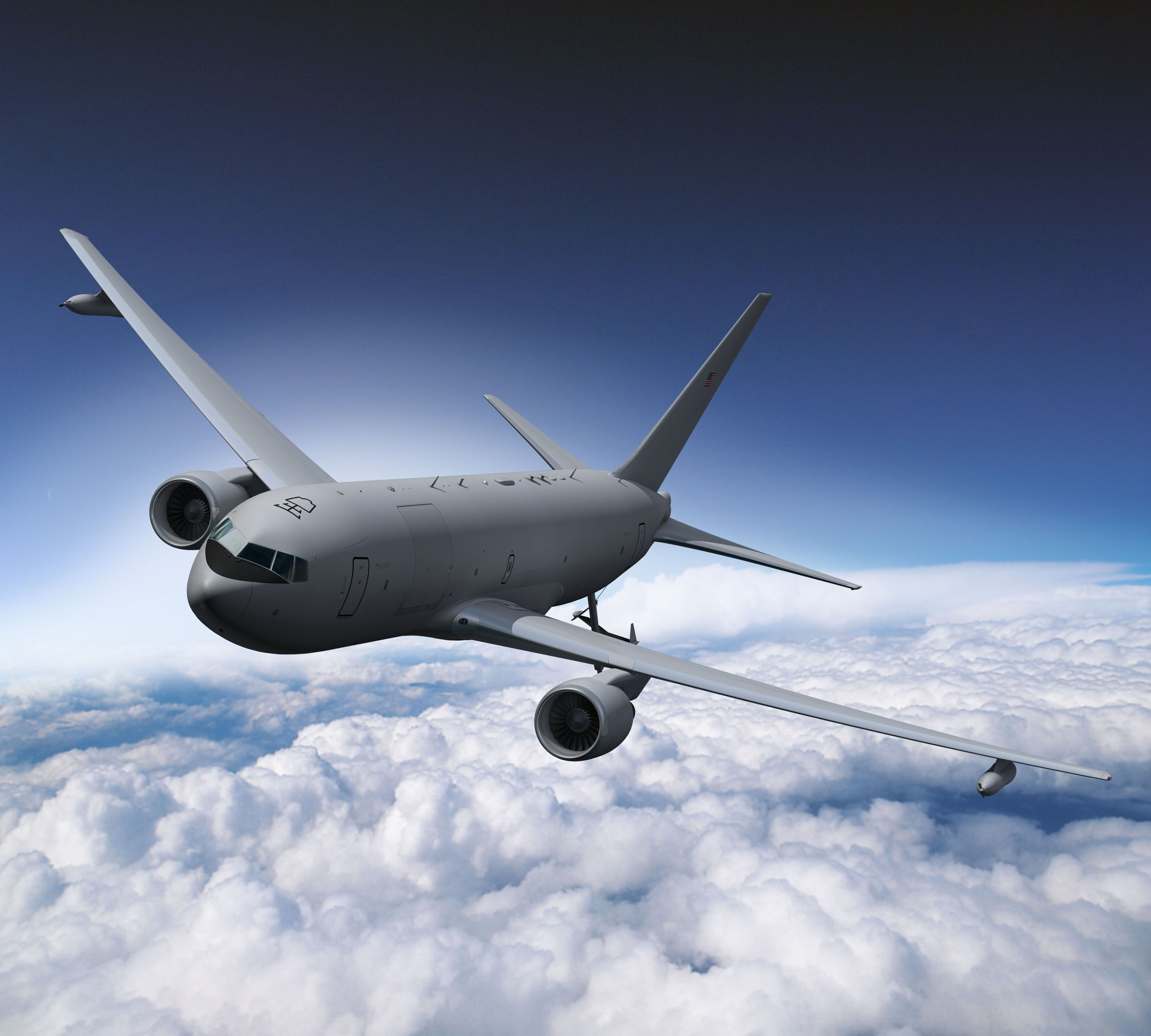
Boeing’s KC-46 is based on the company’s twin-engine, wide-body 767-200ER commercial passenger plane family — the 767-2C — which is a freighter version of the base aircraft similar to but not identical with the commercial freighter version, the 767-300F. The basic plane can be configured either as a tanker, an air medical evacuation plane or a cargo and passenger transport.
The 767-300F has a list price of $188 million. The passenger version, the 767-300ER, carries a list price of $188 million. The commercial planes use either two General Electric Co. (NYSE: GE) CF6-80C2 engines that develop 62,100 pounds of thrust or two Pratt & Whitney PW4000 engines that develop 63,300 pounds of thrust.
The KC-46 uses two Pratt & Whitney PW4062 engines, each of which develops 62,000 pounds of thrust. The plane can carry more than 212,000 pounds of fuel (about 31,200 gallons) and has a service ceiling of 43,100 feet and a maximum airspeed of around 650 miles per hour.
ALSO READ: Why a Boeing 777-300ER Costs $320 Million
The Government Accountability Office (GAO) issued a progress report in April on the KC-46 program and actually lowered the total cost from $51.7 billion to $51.4 billion. At that price, the U.S. Air Force is paying $287 million per plane, and that does not include a parts and maintenance contract. Adding in the value of the long-term parts and maintenance deal would about double the $51.4 billion value of the contract.
The contract with South Korea is worth about $1.38 billion, according to a report from Reuters. That works out to roughly $345 million per airplane. At that price, the contract almost certainly includes a parts and maintenance deal in addition to the planes.
The South Korean government is helping make up the difference that Boeing incurred for underbidding the contract. The company plans to eat about $200 million in development costs, which it plans to make up with higher volumes and parts sales.
Boeing expects to complete the first of four test aircraft in the third calendar quarter of 2014, and the first test flight is scheduled for the first quarter of 2015. The first delivery of a production plane to the Air Force is set for early 2016. All 179 planes are scheduled to be delivered by 2027.
ALSO READ: Why a Boeing 787-9 Costs $250 Million
Get Ready To Retire (Sponsored)
Start by taking a quick retirement quiz from SmartAsset that will match you with up to 3 financial advisors that serve your area and beyond in 5 minutes, or less.
Each advisor has been vetted by SmartAsset and is held to a fiduciary standard to act in your best interests.
Here’s how it works:
1. Answer SmartAsset advisor match quiz
2. Review your pre-screened matches at your leisure. Check out the advisors’ profiles.
3. Speak with advisors at no cost to you. Have an introductory call on the phone or introduction in person and choose whom to work with in the future
Thank you for reading! Have some feedback for us?
Contact the 24/7 Wall St. editorial team.

